Skin and nail care play an essential role in both prevention of lymphedema in those patients at risk of developing this condition, and in the management of existing lymphedema. Current methods of cancer treatment lower the risk of developing lymphedema. However, if a patient had surgery involving the lymphatic system – a radical mastectomy for example – even many years ago, the risk for developing lymphedema will always be present, even if this patient never had any arm swelling.
Prevention is in the patients’ best interest and a great tool to avoid the onset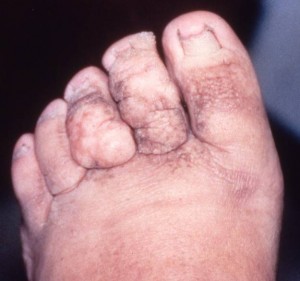 of lymphedema. The skin is the first line of defense against foreign invaders and is usually impermeable to bacteria and other pathogens. However, any defect in the skin such as burns, chafing, dryness, cuticle injury, cracks, cuts, splinters, insect bites and tattoo needles can present an entry site for pathogens or infectious agents and cause infection.
of lymphedema. The skin is the first line of defense against foreign invaders and is usually impermeable to bacteria and other pathogens. However, any defect in the skin such as burns, chafing, dryness, cuticle injury, cracks, cuts, splinters, insect bites and tattoo needles can present an entry site for pathogens or infectious agents and cause infection.
Patients who already have, or had lymphedema are susceptible to infections of the skin and nails. Lymphedematous tissues are saturated with protein-rich fluid, which serves as an ideal nutrient source for bacteria and other pathogens. Lymphedematous skin also tends to be dry and may become thickened and scaly, which increases the risk of skin cracks and fissures.
The process of inflammation may not only make lymphedema much worse by increasing the swelling, but can also develop into a serious medical crisis. The basic consideration in skin and nail care is therefore the prevention and control of infections, which includes proper cleansing and moisturizing techniques with the goal of maintaining the health and integrity of the skin.
Suitable ointments or lotions formulated for sensitive skin, radiation dermatitis and lymphedema should be applied before the application of lymphedema bandages while the patient is in the decongestive phase of the treatment. Once the limb is decongested and the patient wears compression garments, moisturizing ointments should be applied twice daily.
Ointments, as well as soaps or other skin cleansers used in lymphedema management, should have good moisturizing qualities, contain no fragrances, be hypo-allergenic and should be in either the neutral or acidic range of the pH scale (around pH 5). To identify possible allergic reactions to skin care products, they should be first tested on healthy skin before the initial application to areas affected by lymphedema. Skin care products often used by lymphedema patients include Eucerin, Lymphoderm, Lindi Skin products, Curel and Johnson&Johnson Baby Lotion.
Tight fitting compression sleeves or stockings, as well as materials used in compression bandaging may also cause skin irritation. Some patients may be allergic to a certain material used for compression therapy. This situation can be remedied by switching to other materials.
In mosquito infected areas it is necessary to apply insect repellents to the affected extremity (some moisturizers contain natural repellents) to avoid bites, which are a common cause for infections. To take proper care of mosquito bites and minor injuries, it is advisable to always carry an alcohol swab, antibacterial ointment and a band-aid.
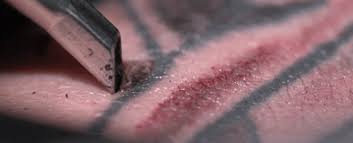 Tattoos in areas affected by lymphedema should be avoided; there are serious possible side effects associated with these procedures, such as infections, allergic reactions to the ink pigments and carriers, MRI complications, and blood borne diseases. In addition, new findings indicate that metal particles from tattoo needles have been found in lymph nodes (for more information see the links on the bottom).
Tattoos in areas affected by lymphedema should be avoided; there are serious possible side effects associated with these procedures, such as infections, allergic reactions to the ink pigments and carriers, MRI complications, and blood borne diseases. In addition, new findings indicate that metal particles from tattoo needles have been found in lymph nodes (for more information see the links on the bottom).
When caring for nails, it is important to keep the risk of infections to a minimum. Finger and toe nails should be kept short using clippers (no scissors), toenails should be cut straight across, and a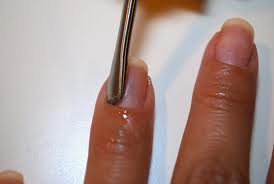 podiatrist should be consulted to treat and prevent ingrown toe nails. Cuticles on fingers and toes should not be cut but pushed back with a cuticle pusher.
podiatrist should be consulted to treat and prevent ingrown toe nails. Cuticles on fingers and toes should not be cut but pushed back with a cuticle pusher.
Bacteria between the natural and artificial nails are a common cause for infections; acrylic nails should be avoided.
Dear Lymphedema Blog Reader – if you like the contents on this website, please help to keep it going. A great amount of work and research is necessary to provide you with up-to-date information on this site. Your donation supports these efforts and associated administrative costs. Surplus funds will be donated to Lymphedema/Lipedema-related charitable endeavors. Please donate using the “Donate Now” button on the right upper hand of this page – Thank You!
Join Lymphedema Guru, a Facebook page solely dedicated to informing about all things related to lymphedema – news, support groups, treatment centers, and much more

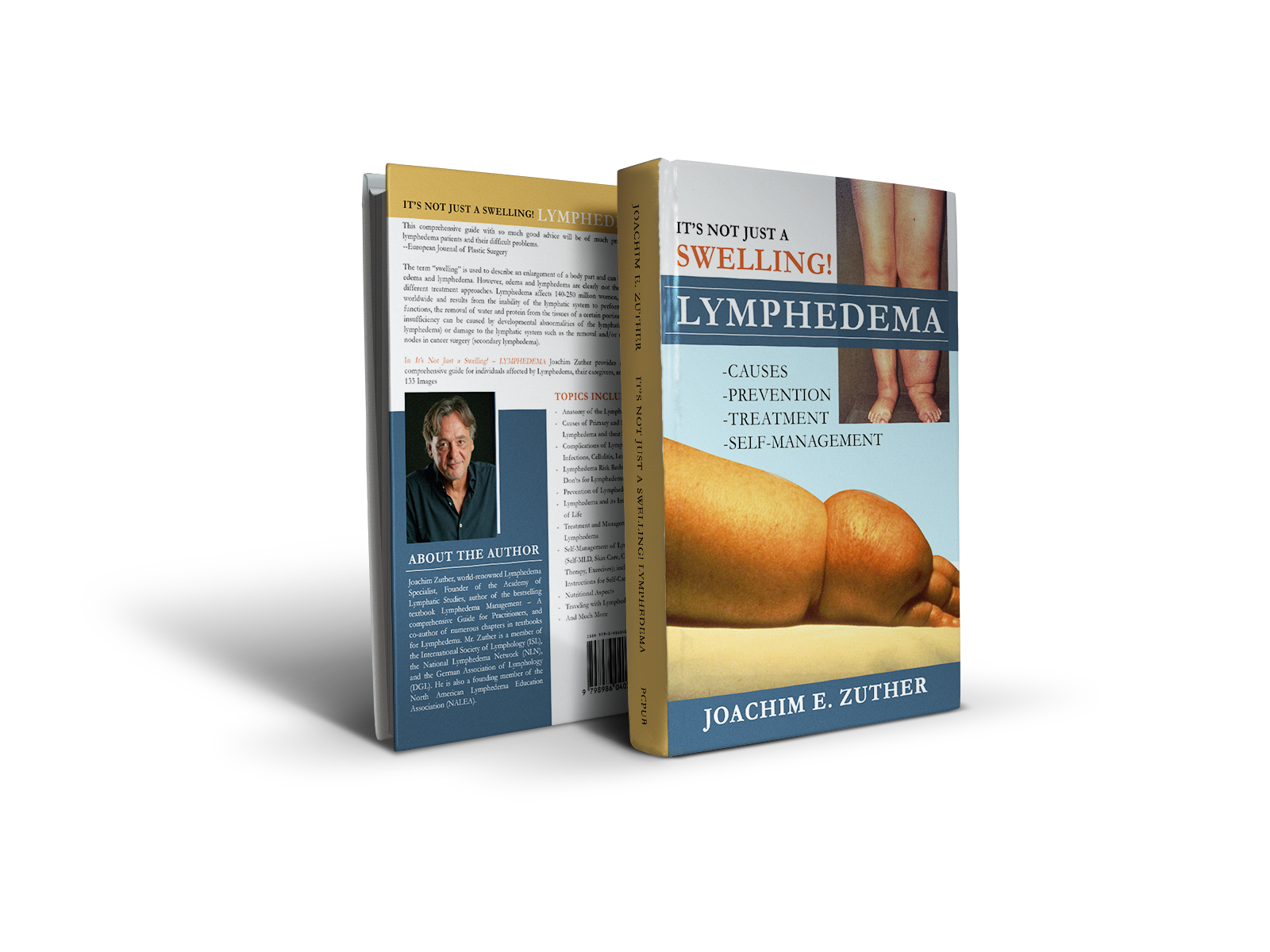
 Joachim Zuther, Lymphedema Specialist.
Joachim Zuther, Lymphedema Specialist. 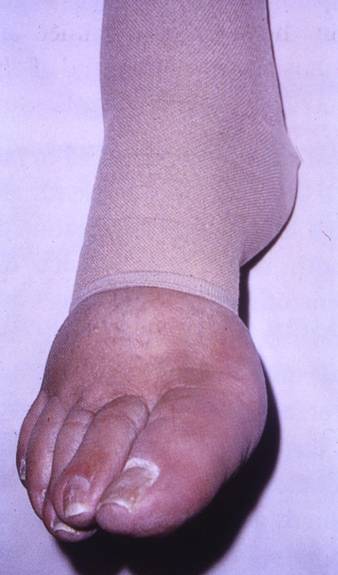


Great advice! I’ve never felt that acrylic nails were worth the expense and time, and now as a person with lymphedema I have another reason to avoid them. And I will test skin lotions and creams on my unaffected hand before applying them to my lymphedematous hand. Too many times the skin on my hand has broken out because I didn’t test the lotion first.
Jan
How can someone tell what the pH of an off the shelf moisturizer is? Thanks in advance!
Dear Katie – in most cases you can find out by searching for the product online.
Do you believe Aloe Vera would help lymphadematous skin? My toes look a LOT like the ones in the picture in the article, I’ve been dealing with this for 40 years now. Thanks for any advice on moisturizers that may help our skin. :o)
Dear Cynthia: Aloe Vera can certainly be used. Other products frequently used by peole with lymphedema are Lindi Skin products, Lymphoderm and Eucerin.
I have bilateral primary lymphedema and have developed what looks like warts growing on most my toes, is there a way for me to get rid of them without risking infection?
Dear Michelle: I would suggest to approach your lymphedema therapist and MD with this question.
I have also found there is a “yellow nail disease” that is associated with lymphadema. When I was 10 my lymphadema “showed up” and shortly thereafter my finger and toenails started turning yellow and became very hard and thick…they also only adhere to the nail bed half way up the nail…they actually get caught on things and will pull back off to the “root” of the nail and will eventually come completely off…
I have post surgical lymphedema in my left leg. The damage to my foot (toes) is extreme. My whole leg is much bigger than the other leg but skin still looks very good considering what its been through however the toes are just awful. I’m considering having some removed. I’m 34 and it would be nice to keep them a bit longer if they can start behaving themselves. I have plantar warts on the top of my toes. They don’t look like warts but thats what the pathology came back as after a minor surgical procedure on one of them last year. Basically at the natural joint in each toe it looks like packman. Most people would never expect that I have this problem because I do such a good job of hiding it. Before this surgery I was a gymnast,runner,long distance rollorblader…very active. This problem…well it sucks! Too moist or too dry creates major issues. There is no fix for lymphedema and the issues that come along with it. You just have to do the best you can with what your working with. Somedays are better than others.
[…] Skin Care: Patients who have lymphedema are susceptible to infections of the skin; areas between skin folds or the underside of the breast are particularly prone to skin damage and infections. Edematous areas should be kept clean and dry and suitable ointments or lotions formulated for sensitive skin, radiation dermatitis and lymphedema should be applied. […]
[…] be instructed in self-MLD and encouraged to perform self treatment for at least 20-30 minutes daily.Skin Care: Patients who have lymphedema are susceptible to infections of the skin; areas between skin folds […]
Ingrown toenails can be minimized by making sure that the cuts on the nail are properly done. Blunt nail cutters are notorious for causing ingrown toenails. :`”,
Have a great day! http://www.healthmedicinelab.com/earache-remedies/
What about olive oil for the skin? When an MD looked at my legs the last time I was hospitalized for infection, she noted that a few of her patients had lymphedema, and used olive oil for their skin. Your opinion?
While we would suggest lotions, such as Eucerin or Lymphoderm, olive oil may also be used to moisturize lymphedemateous skin
I am from South Africa I got heridt lymphedema(R leg)for the past 3yrs each time I got infection my R leg get swellen and very sore.What can I use to drain this fluid out or what to eat or not to eat
In case of an infection in your leg, it would be very important to get antibiotics to fight the infection. The most effective way to treat lymphedema is complete decongestive therapy. You should also elevate your leg as often as possible. Please also read: https://www.lymphedemablog.com/2010/12/10/nutritional-aspects-in-lymphedema/
Dr. Zuther,
Thank you for continuing to educate us about Lymphedema.
I’m confused. Your blog recommends pushing back cuticles but not cutting them. But you also provide a link to the Lymphedema People blog, and they offer contradictory advice: “Cut your nails with nail clippers and use hand cream regularly. Never push back or cut your cuticles.”
I’m not a vain person, but my nails have really taken a beating since my diagnosis, because I’m terrified of doing anything that might invite infection. This has only increased my level of self-consciousness. I showed up at my LE doctor’s appointment a few years ago with a stunning pedicure, and my doctor really let me have it.
My lower extremity LE is under control (thank God) and I don’t see the harm in a gentle pedicure. In fact, I think it might be helpful in keeping nail growth under control, preventing ingrown toenails, and exfoliating the excess dead skin that tends to accumulate on my feet and ankles. I await your reply.
Please understand that – as you mentioned correctly – the most important aspect is to avoid injuries. Cuticles may be pushed back, but should not be cut.
Dear Lymphedema Guru,
It’s summer where I live and very hot. I have Lymphedema in my right arm, I wear a class 2 sleeve all the time, except when I run; then I wear a class 3. I try to stay out of the heat as much as possible, but we own an older home and our air conditioner is not terribly efficient. For the past couple of days, I have taken off my sleeve at night to find a rash on my arm , which appears to be heat rash. It’s not cellulitis; I have no fever. Is this a typical for people with Lymphedema?
Dear Guru,
I have extremely severe swelling in my knees, legs (calves, shins), ankles, feet & toes. This began in March of this yr. Since then I’ve been to 22 (yes, that’s 22) different drs including specialists such as:
Walk-in clinic–rushed to cardiologists
cardiologists-possible congestive heart failure; blood clots–all tests NORMAL
Pulmonary-lung test, breathing test–all tests NORMAL
6 ER visits–tested for EVERYTHING (from strep to gout to COPD)
Internist–ran same blood tests; 4-5 different rounds of lasics (diuretic)-none of which help WHATSOEVER!!!
Urologist–possible kidney infection/renal failure-all tests NORMAL
OBGYN (twice)-everything normal
Pelvic Specialist– history of endometriosis, possible cause(?) all tests NORMAL
Each & every dr got a list of any/all medications I take (none of which cause this type swelling.
Finally my internist said Idiopathic Edema.
I need help!!!! Severe help!!!! It’s to the point that it’s affecting my quality of life.
I don’t know what to do or whom to see next. It’s extremely painful.
-thank you,
Rachel (35yr old, female, complete hysterectomy). PLEASE HELP!!!!!!!!!
Dear Rachel: Idiopathic edema means that the swelling is of unknown genesis. It is difficult to accept this diagnosis knowing your history of hysterectomy. Most likely you are suffering from lymphedema secondary to the hysterectomy. I would suggest either consulting with a physician who is familiar with lymphedema, or with a lymphedema therapist. You may contact the National Lymphedema Network (NLN) for a list of physicians; in order to locate a lymphedema therapist in your area, please follow the link “Find a Therapist” on the menu bar on top of this page.
My question is: — I have nasty nails! They have thickened (under nail) and have caused them to raise. My PCP says they are caused by some nasty fungus. However I don’t think so. I think it’s part of the lymphedema and the swelling. Left foot big toe and next to it. The right big nail is starting. So, my PCP wants to remove my nails. I am all for it if indeed it is fungus and will stop the pain! The only way I can stop the pain is to cut the nail down HALFWAY – then it looks horrid, but alas no more pain. The nail itself is light brown/grayish and a bit yellow.
Suggestions?
OH and I tried green tea, but that didn’t work. Now I am trying peppermint oil to see if it will help.
Thank you –
Yvone
Yvone: Yes, I have those too. In fact all the toes and also my thumb. It seems all toes and fingers may become involved. Look for the article online called ‘yellow nail syndrome’. A dermatologist I asked about my nails said, do not be hasty to have surgery on the nails as they probably won’t heal very well with the lymphedema. I had my toes checked twice for fungus but it is not fungus related if you have lymphedema, it’s from the lymphedema. Hope you can understand this. Helen
I have Lymphedema in my left leg. Everything I read warns of the dangers of minor cuts, mosquito bites, etc. is this concern of open wounds & bites primary to the leg or to anywhere on my body?
Brenda: These precautions are limited to the swollen extremity and the adjacent quadrant of the trunk
Dear Lymphedema Guru,
Why do you prefer synthetic skin care products with chemicals that might cause further problems, for example Fragrance in Johnson&Johnson Baby Lotion – instead of products that are 100% safe for the body, without any potentional irritants (olive, coconut and other, natural oils, aloe vera, etc)?
Dear Andrea: You are absolutely correct, natural products have very good moisturizing qualities as well.
I have lower extremity lipo-lymphedema,and have a 2.5 cm splenic artery aneurysm. My question is what will happen to my lymphedema if a splenectomy is needed?
Dear Kelly: While it is impossible to predict, it is not likely that this procedure will have a negative effect on your lymphedema
I also use coconut oil and essential oils such as cypress, lavender, orange, grapefruit, lemon. It has helped with my dry skin. Also promising is cold pressed castor oil. It has really made a difference with swelling and dry skin. It works best when wrapping up the legs at night.
Hello, please can you say your opinion about coconut and almond oil for moisturize the skin in primary legs lymphedema?
Thank you
These products can certainly be used for skin care. Here is a link to an article that you may find helpful: https://www.lymphedemablog.com/2011/04/13/skin-and-nail-care-in-lymphedema-management/
they were originally checking the leggs. the legs the legs cleared but my inguinsls didnt. i have had an ovrrgrowth of tissue every since,my failed lumberfusion is .I also got sun burnt and a demodex eyemite infection. im worried i might have sarcoma.i do have alot of swelling from my prior size. but its hard to get a dr. that knows how to treat me. i also have a double bowel blockage that causes mega colin. i need surgery but am someone afraid due to getting phneumonia 2 to 3 times from the last yr. please call me and help me figure out what to do. The dr.s are from usc keck. but they dont have very much info about the different issues. like the propholaxic antibiotics especially around having surgeries. i notice i dont heal like i use too.id like to have the ultra sound and see an infectious desease dr. to rule out othrr causes.Thank u for ur help. Tamera